Graphic
DDB Group Aotearoa NZ 31 Samsung – The Worst Children's Library
-
Pou Auaha / Creative Directors
Sarah Shepard, Kim Scott -
Pou Rautaki / Strategic Leads
James Blair, Jack Murphy, Lucy Kang
-
Ringatoi Matua / Design Director
Dean Pomfrett
-
Ngā Kaimahi / Team Members
Jullian Liang, Lizzy Funaki, Jacob Davies, Julz Lane, Miller Christensen-Yule -
Kaitautoko / Contributors
Matty Burton, Gary Steele, Rory McKechnie, Haydn Kerr, Liz Knox -
Client
Shannon Watts
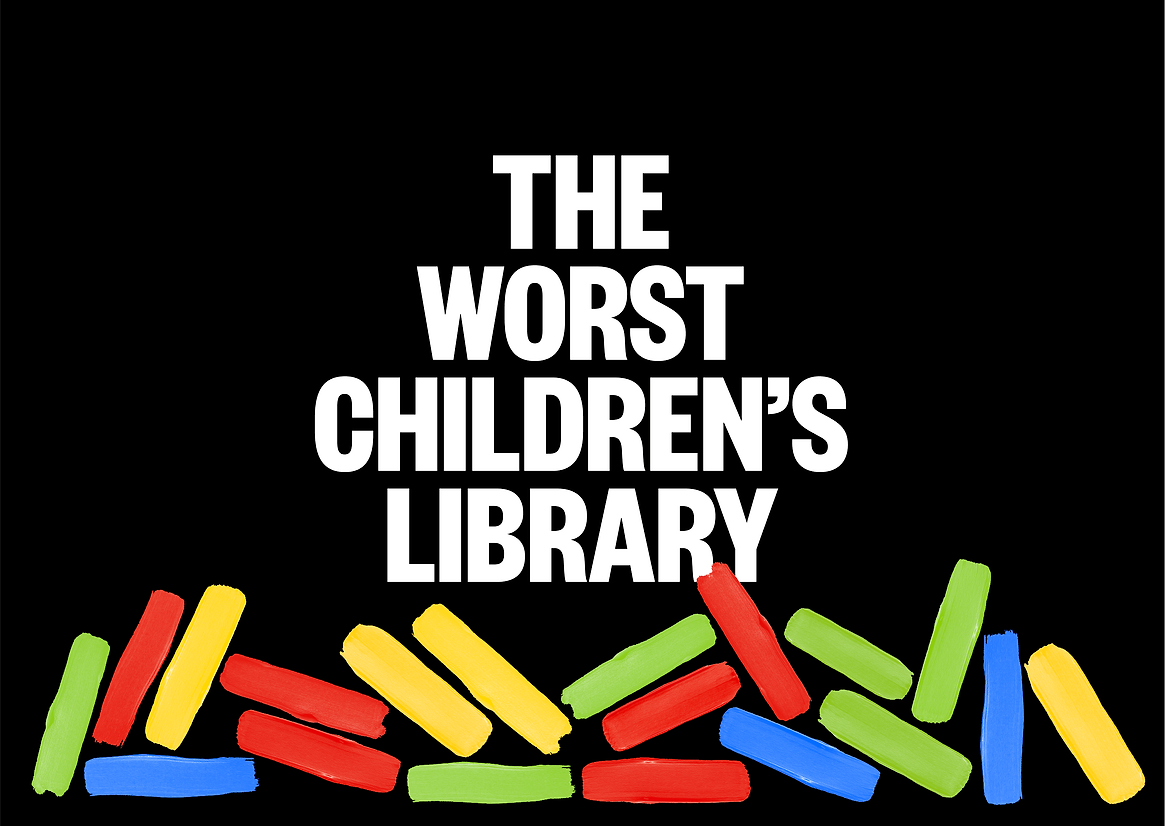

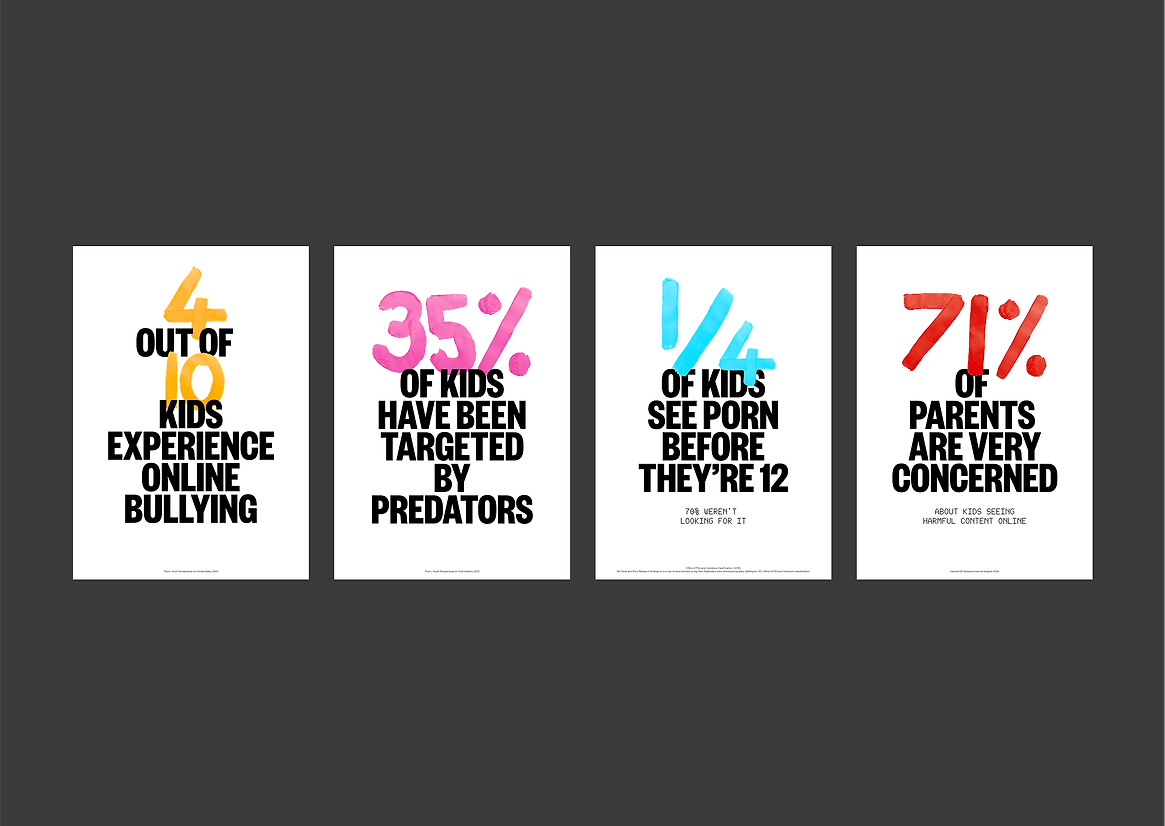

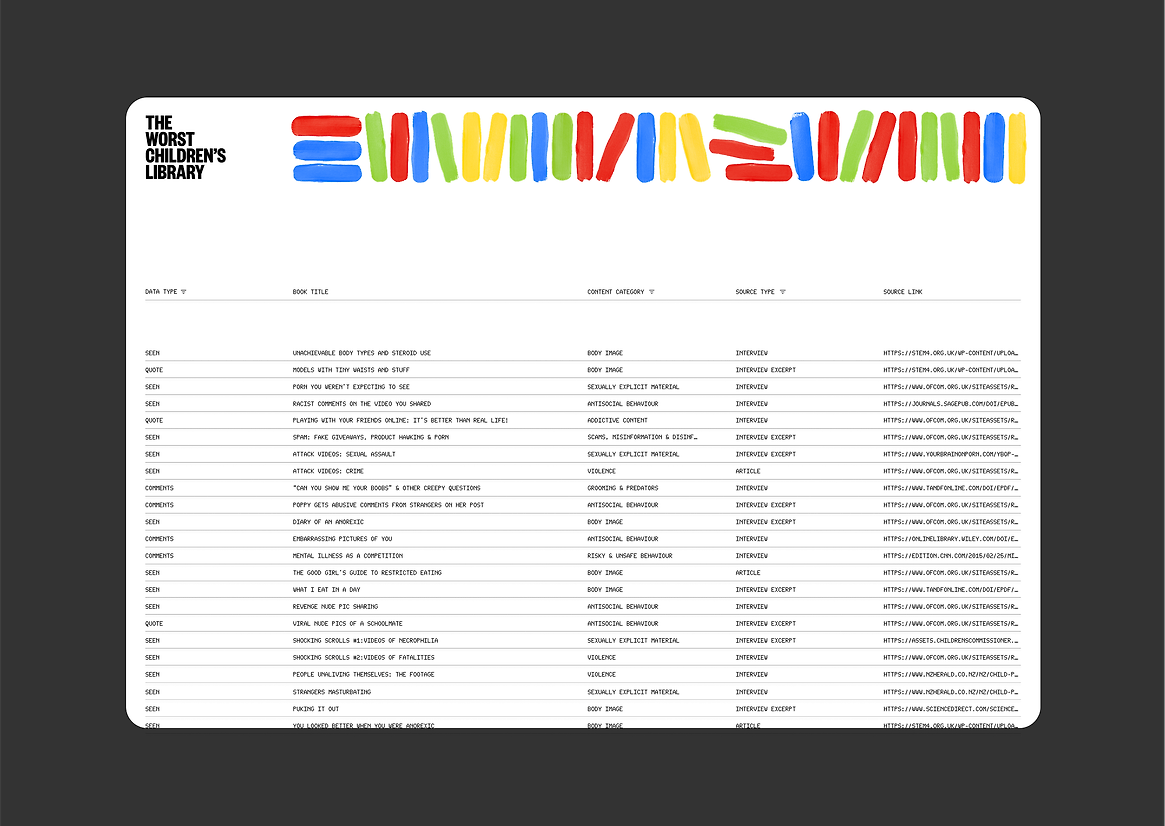
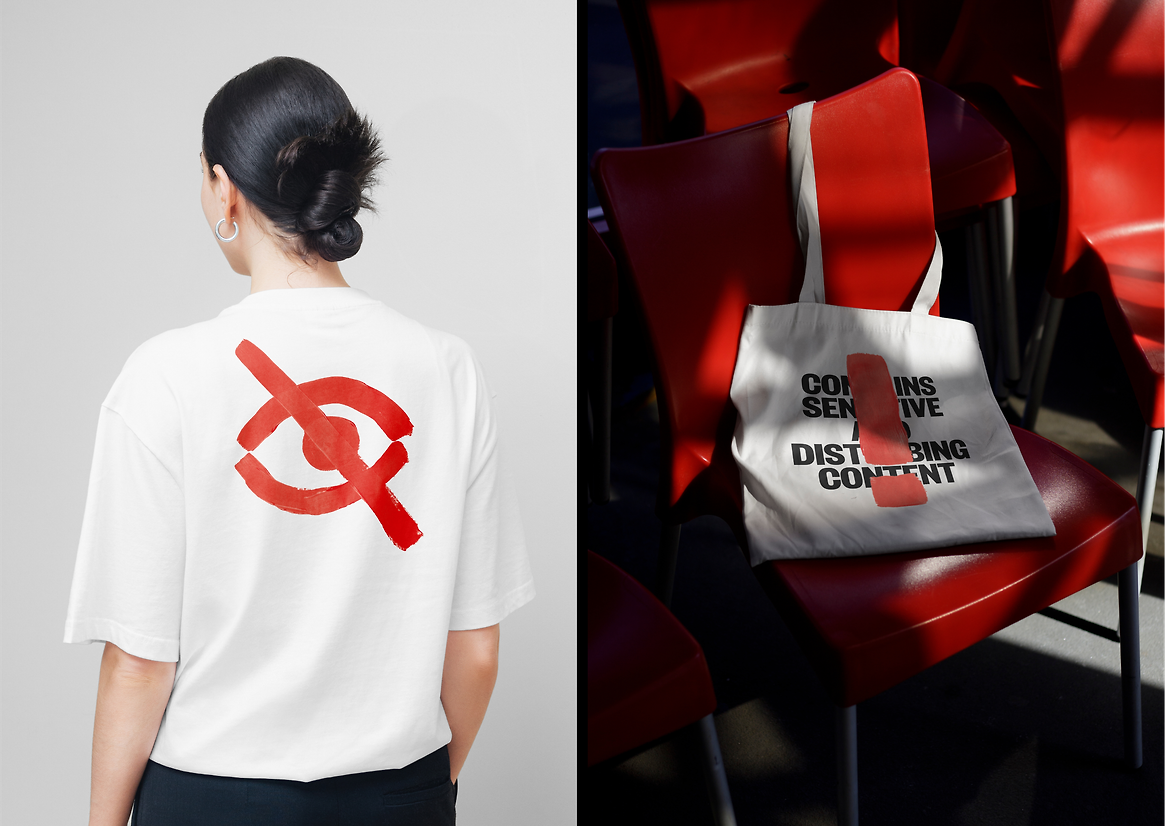
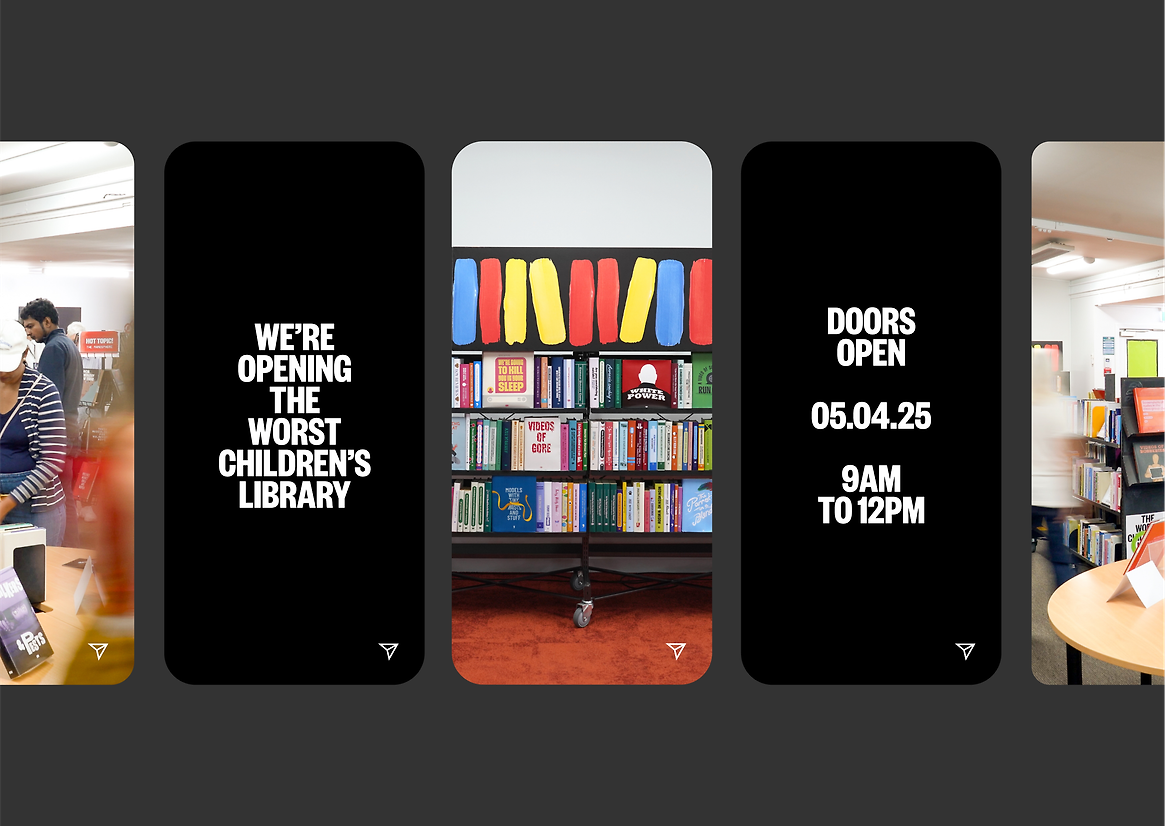
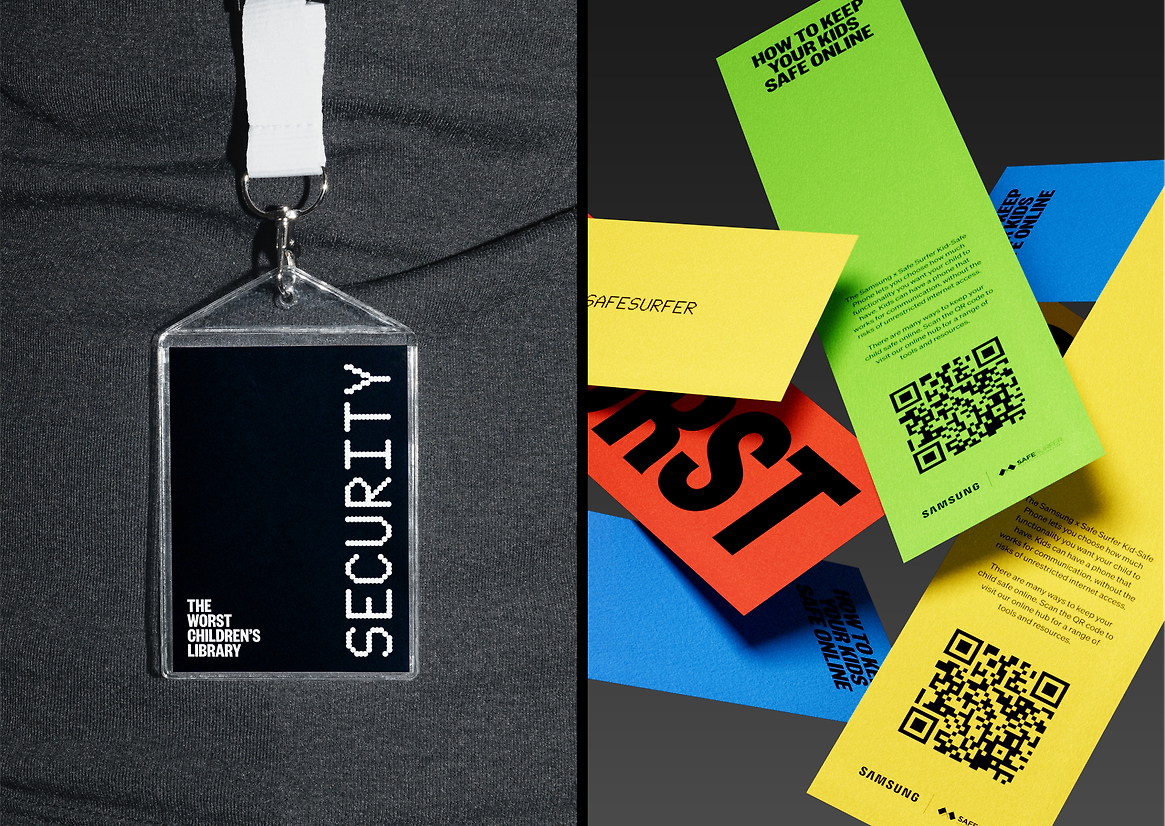
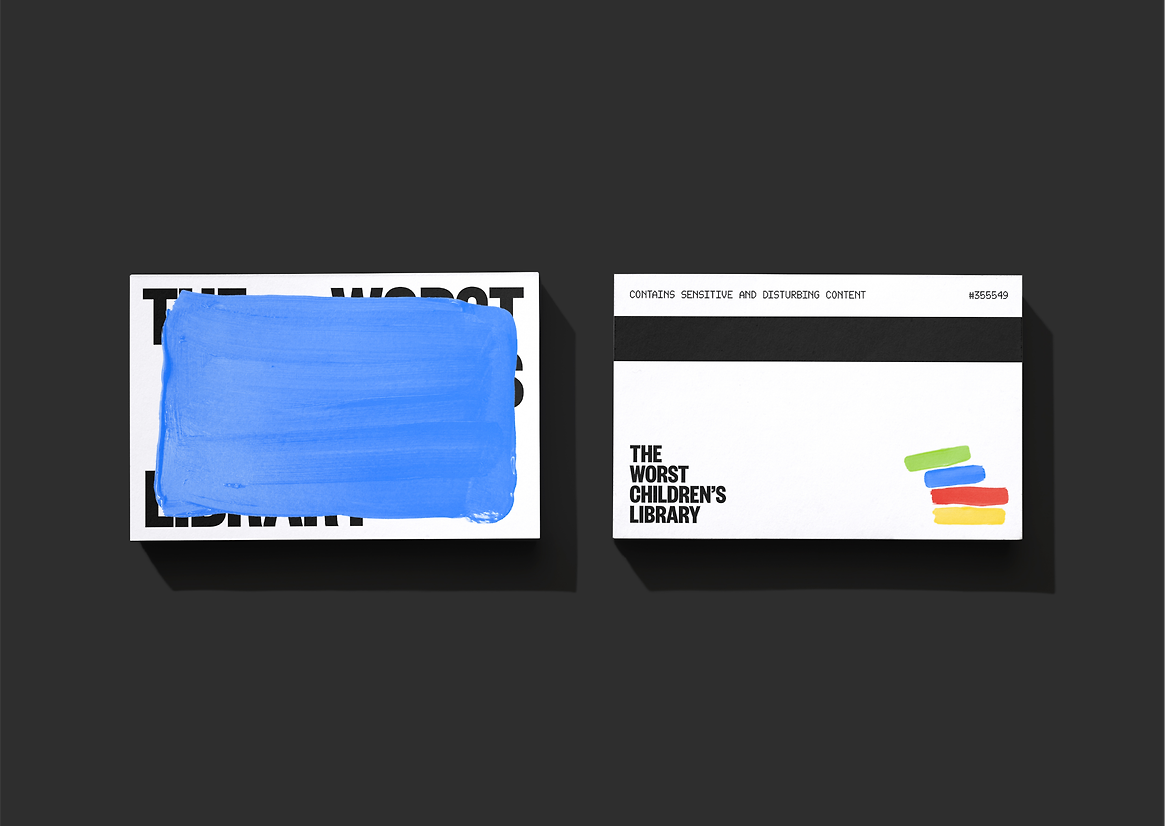
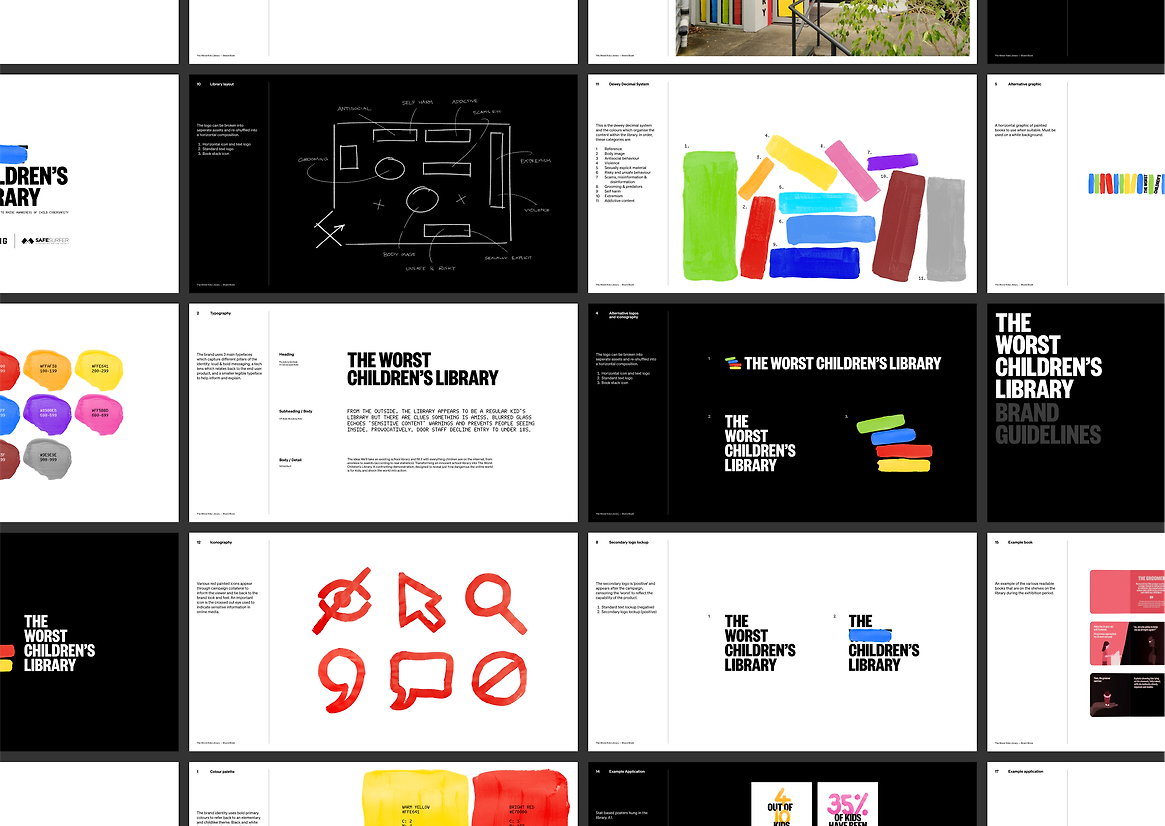
Description:
It’s normal to give your child a phone. 71% of 11-year-olds have one. By 14, it's 91%. Whether by accident or out of curiosity, almost every child has seen harmful content. But because of shame, most don’t tell their parents. To launch Samsung’s Kid-Safe Range of devices, we needed to communicate the scale, range and severity of potential harms lying in wait for their kids on the unfiltered internet.
So, we made a library.
The Worst Children’s Library is a database of children’s experiences of online harm, turned into a real-world experience for parents. We put all the harmful online content children have seen in one school library. 1,160 individually designed library books are each a visual representation of something a child has experienced online, according to data compiled from hundreds of sources.
We transformed Auckland Normal Intermediate’s library and invited the public to visit. The R18 experience began with an age/security check, trigger warning, and introduction by the librarian. Then, visitors interacted with the books and explored the digital catalogue to see the data behind them all.
The Worst Children’s Library is so confronting that children are banned, even though they’ve already seen its content online. This irony shaped the visual approach: at first glance, the library and its books appear innocent, using vibrant colours and playful paintmarks. But a closer look reveals a stark black-and-white palette and bold typography, communicating the seriousness of the topic and creating an unsettling contrast with the childlike elements. Stacked, messy paintmarks mimic books about to topple, amplifying the tension. This clash of innocence and intensity unified the library’s look across print, digital, and the physical space. The design also served a practical purpose: paintmarks acted as branding, wayfinding, and window coverings to ensure children couldn’t see inside.
The Worst Children’s Library successfully launched the Kid-Safe Range, giving families next-level protection agains child cyberharms. The campaign received global attention, generating over 200 media stories and $10 million in earned PR, all without a media budget. It sparked conversations among parents, educators, and lawmakers, with calls for the installation to tour schools and Parliament.